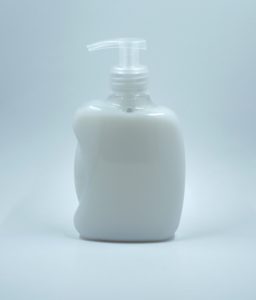History of Sulfate Use
Sulfate is a naturally occurring compound consisting of a single sulfur ion and four oxygen ions (SO4). Sulfate is a very common compound found in nearly all water wells, and enters water through the dissolution of the aquifer media. Common sulfate bearing compounds include barite (BaSO4), epsomite or epsom salt (MgSO4·7H2O) and gypsum (CaSO4·2H2O). Sulfates have a number of uses commercially for pharmaceuticals, textiles, soaps, insecticides, and wood pulp production. Sulfate compounds often contain hardness ions (calcium and magnesium), and contribute to increased hardness levels in some groundwater systems. Sulfate is considered a secondary contaminant and nuisance chemical in high enough concentrations. The MCL for sulfate is 250 mg/l, but typical well water levels range from 5-50 mg/L. High sulfate levels of 500 mg/L or more have been known to have a bitter or medicinal taste, have a laxative effect, and cause dehydration. High sulfate levels can also contribute to mineral deposits on faucets and appliances, and produce a film in ice-cube trays. In some water wells, sulfate reducing bacteria consume sulfate and create hydrogen sulfide as a byproduct. Water heaters that see high sulfate levels can also produce hydrogen sulfide over time as the magnesium anode rod reacts with sulfates in the water, producing hydrogen sulfide gas as a byproduct.

Sulfonated compounds, like sodium lauryl sulfate or (SLS) are found in many products including soap, shampoo, and toothpaste. SLS is a surfactant whose foaming properties aid in cleaning. (Photo by Brett Jordan on Unsplash)
Treatment Options
As stated above, sulfate is not typically considered a health risk, and is listed under the secondary contaminants for the EPA's drinking water standards. Therefore, many certified labs will not include it in a water analysis. They may test for total sulfur which would include all sulfur containing compounds present (including sulfate). Total sulfur analyses are often misconstrued as a hydrogen sulfide test, emphasizing the need to thoroughly review any water analysis report. The presence of sulfate does not mean that hydrogen sulfide is present, and vice versa. In the water treatment world, the sulfate level is an important consideration when evaluating potential corrosion of lead solder, and the associated increased lead levels in the water. More specifically, we are concerned with the Chloride to Sulfate Mass Ratio (aka the CSMR), which considers the ratio of chloride ions in mg/L to sulfate ions in mg/L. Sulfates can form thin protective layers on lead surfaces that inhibit galvanic corrosion from chlorides. A CSMR of 0.5 or greater can lead to increased corrosion potential of lead bearing pipes, plumbing fixtures, and solder that leaches lead into drinking water. Lead corrosion from a lead solder interface is influenced by other factors like pH and alkalinity, but the CSMR is especially important to consider when removing sulfate from water. For example, a strong base anion resin in the chloride form can be used to remove elevated levels of sulfate in water. However, this is not generally an advisable approach to treating for high sulfates. This approach will remove sulfates, but will often create a corrosion problem because it will raise the chloride levels of the treated water, and in turn increase the CSMR. In other words, one would likely solve a sulfate problem, but create a chloride problem in the process. In high sulfate applications, the TDS is also typically very high, meaning that a broader, general TDS reduction technology is likely appropriate. The most common of these technologies would be a POE R.O. system with appropriate pre and post-treatment. Master Water Conditioning has multiple reverse osmosis treatment options available for point of use and point of entry found at this link.









